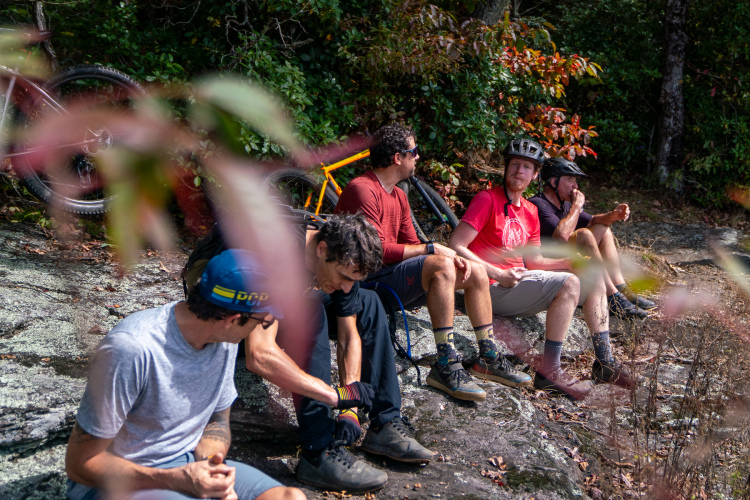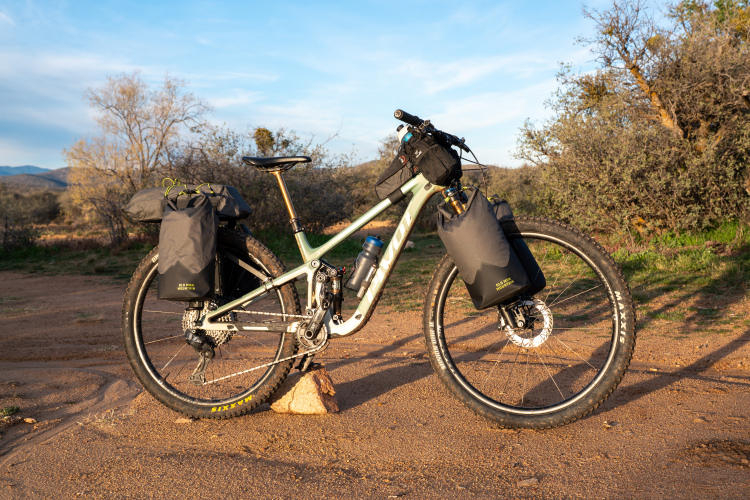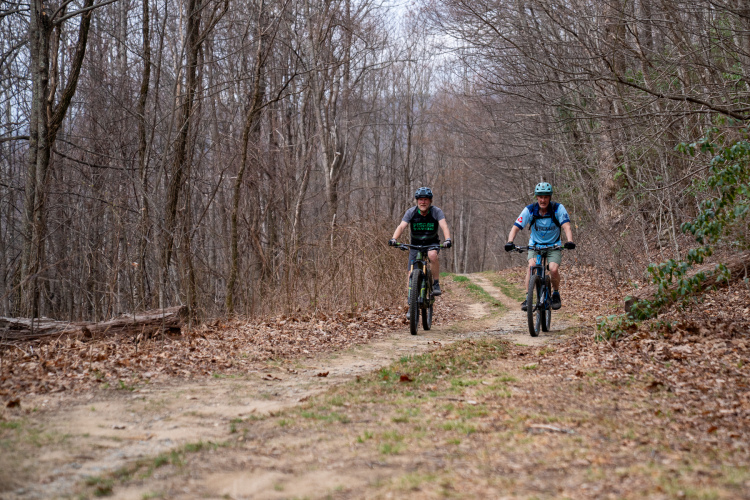I may have been born in the frozen tundra of central Michigan, but after spending most of my adult life in the Southeast, I have developed a strong aversion to the cold. Frankly, I am kind of a wuss about it.
Over my years of riding, I have amassed enough gear to adequately cover my legs, torso, arms, face, and head during cold rides, but I still struggle with my extremities. Namely my feet. I have tried a variety of different methods to keep warm, including thick wool socks, doubling-up on socks, shoe covers, and different insoles. Some of these methods helped to a certain degree, but none solved the issue entirely. On long, damp, and cold rides, my feet were still getting cold.

When 45NRTH reached out to see if we were interested in testing their new light-duty Japanther boot, I enthusiastically agreed. Would this finally be the winter I kept all my little piggies warm?
Design
Fat bikers are no doubt familiar with the 45NRTH brand. They produce a wide variety of fat bike tires, gloves, boots, and other cold weather gear. Currently, they offer three boots in their lineup. For the Arctic ice riders, the Wølfgar is rated for temperatures between -25F to +10F (-31C to -12C). Hopefully, I will never have the need for such a boot. The Wölvhammer is aimed at rides in the 0F to 25F (-18C to -4C) range, which is slightly less crazy. The Japanther, which I tested, is rated as 25F+ (-3C+), in other words, it’s ideal for our Georgia winters.

For a warm boot, the Japanthers have a minimal appearance. Compared to 45NRTH’s other boots, the Japanther looks much closer to a standard MTB shoe with an integrated cover. In a way, that is kind of what they are. To remove the shoe, unzip the wind-resistant zipper and undo the Velcro ankle closure. This will reveal the quick lace system below, as well as the second Velcro closure around the ankle. The tongue is integrated with the rest of the shoe, likely to help keep out the elements. Even with four levels of strapping–laces, two Velcro closures, and a zipper–the Japanthers are easy to put on or take off.

The Japanther’s insole uses waffled foam, reflective aluminum, and wool felt to help prevent the cleat from acting as a heatsink. The upper is a rubberized textile, and big, soft, rubber lugs on the outsole provided excellent grip during the inevitable winter hike-a-bikes. 45NRTH lists commuting among the Japanther’s possible uses, and they added a reflective material to the back for extra visibility.

It should be noted that the Japanthers do run a bit on the small side. I typically wear a size 46 in just about any brand of shoe, but 45NRTH suggested going with a 47. With my typical cushy Swiftwick wool socks, the fit was perfect. Even with thick socks, I still had wiggle room for my toes–important for keeping warm.
Riding
During the first couple rides, I did experience some discomfort around the ankle area because the rubberized material of the upper was so firm. However, after the initial break-in period, the shoes were as comfortable as any I have worn. Even with the double cuff closure around the ankle, I never felt like the boots were too bulky, limited my range of movement, or negatively impacted pedaling performance.

My size 47s–with cleats installed–weighed in at 22 oz (630g) each. That is substantially heavier than my standard riding shoes, which are closer to 400g each, but the weight of the Japanthers was never a hinderance. I was able to ride 4+ hours in them without feeling like I had cinderblocks on my feet.
45NRTH makes sure to point out that the Japanthers are highly water resistant, but not waterproof. While I did not go as far as standing in a lake to test this, I did hit creeks and puddles at speed, rode in the pouring rain, and generally splashed around in the mud–you know, winter mountain biking. Through all this, I never had moisture make it through to my socks. I personally do not feel the need for more moisture protection than the Japanthers offered, but maybe your rides are wetter than mine. For those of us who ride in crappy (but not the crappiest) conditions, they are ideal.

Hike-a-bikes are an unfortunate evil on many of our best trails here in the Southeast. Luckily, these boots were up to the task of off-bike excursions. With tall and widely-spaced lugs on the outsole, you would have to be chugging through some heinous mud for them to pack up. The rubber is grippy and soft, but the knobs are still supportive. Leaping from greasy rock to greasy rock was infinitely less sketchy when compared to my standard XC shoes. The tall lugs and thick insole do make for a taller overall shoe–I found that I had to raise the saddle on my bike to get proper leg extension.
45NRTH struck a great balance between pedaling performance and off-the-bike comfort with the midsole. I felt it was plenty stiff–so much so that I did a 50-mile race in them without issue. During the aforementioned hike-a-bikes, there was enough flex to make walking easy.
These boots are also highly wind-resistant, which was very welcome at the last Snake Creek Gap race in February. The temperature at the start of the race was 23 degrees and it never got above freezing all day. To make things worse, the wind swirled the entire time. My feet were nice and toasty for the first couple hours, then got a touch chilly before warming back up during the last few miles. At most, I would characterize that brief period as “slight discomfort.”

I would say the 25-degree floor that 45NRTH set is a firm one. But if I am being honest, without the race to motivate me, I never would have been out riding at that temperature in the first place. If you think you will regularly be riding in temps below 25, it would be best to step up to the Wölvhammer–stay tuned for Greg’s review of the latest Wölvhammer model. Most of my crappy weather rides are rainy, with temperatures in the upper 30s to 40s, and the Japanthers are well up to the task for those.
Durability
I have only had these boots for a few months, and our winter has been even milder than usual, so I have not been able to give the Japanthers an extreme durability test. However, if the couple hundred miles I have in them so far is any indication, they will be around for several seasons. The miles I put on them have been rugged, but there are no frayed seams, peeling soles, or cracked lugs to speak of.
Final Thoughts
Try as I might, I do not have any gripes about the Japanthers. The easy way out would be to complain about the price, which is $225, but it is a reasonable sum for a quality winter shoe. In fact, it is right in line with competing products from Shimano, Lake, Northwave, and Specialized. Since these boots will only be used in the winter, I could see them easily lasting five or more years. Is a $45 per winter investment worth it to you to keep your feet warm and comfortable while riding? It damn sure is to me.
Thanks to 45NRTH for providing the Japanther boots for review.










0 Comments